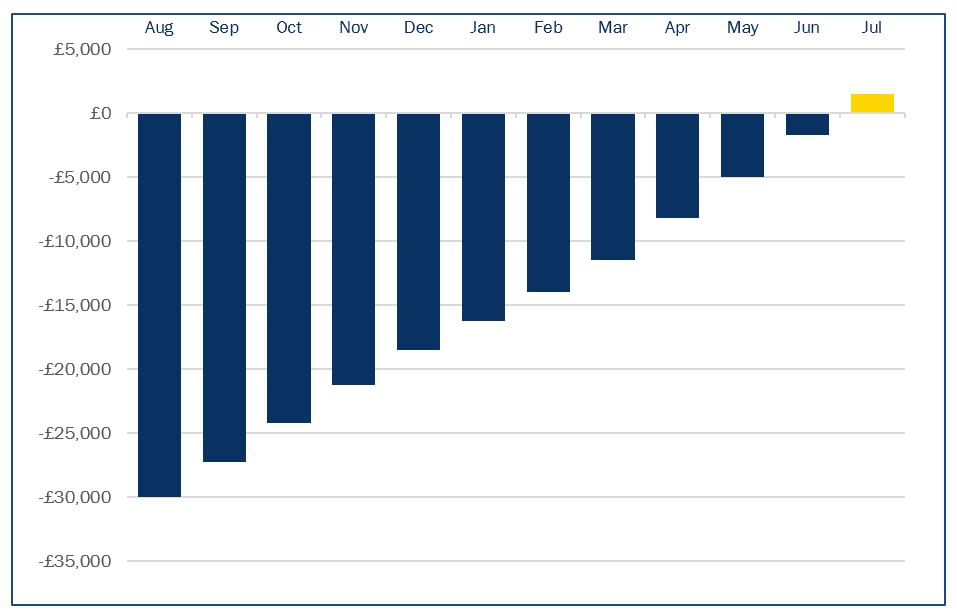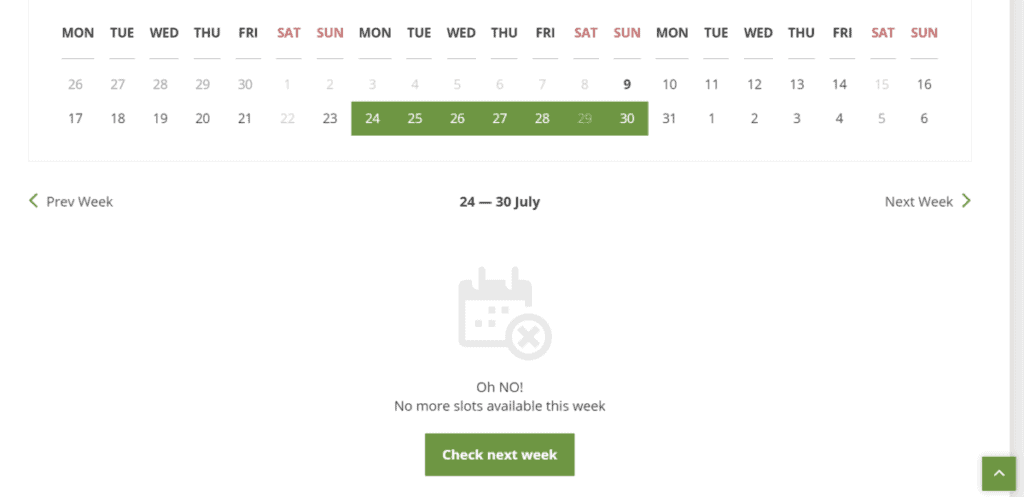Acre for acre, dog fields have the highest return on investment of any land use I know of that doesn’t involve selling up and watching the developers move in.
With the UK dog population currently a smidge over 13,000,000 (yes you read that right) and an increasing number of Public Space Protection Orders being passed that restrict areas where dogs are allowed to exercise, the market for secure dog fields is growing – fast.
Last year I was a speaker at the Farm Business Innovation Show and if you were in attendance at that show, you’d be forgiven for thinking that by July this year, the entire country would be awash with glamping pods!

I couldn’t believe how many flat pack chalets, fully built ‘pods’ and quirky hobbit hole plans were available to buy or lease! Then there were mobile bathroom facilities, wood-fired hot tubs and BBQ solutions – all geared towards the bouji townies looking for a temporary escape to the country.
As I walked around, I had a nagging feeling. The business part of my brain didn’t like the numbers – if you wanted to lock yourself into a £200,000 finance deal for a handful of pods, you didn’t have to try very hard to find a supplier. The anti-social part of my brain didn’t like the fact that the high-end hospitality element of a glamping operation was being so casually glossed over by the sales staff. There is a heck of a lot of ‘people-ing’ required for even the smallest glamping operation.
If I’d been sat in the Dragon’s Den listening to a glamping pitch, I’d have been the first with an “I’m out”.
When it came to my turn to ‘pitch’ dog fields, I started with this –
“if you don’t like people and you don’t want to burden yourself financially for years to come, perhaps you might like to consider opening a dog field”
I noticed ears pricking.
Don’t get me wrong, dog fields aren’t all buttercups and daisies but if you’ve got the right bit of land, dog fields can be a valuable part of any farm diversification model. Let’s look at the main reasons why.
Dog Fields Offer a Fast Return on Investment
In all but a few very special cases, the ROI for a dog field is between 8 and 16 months. If you’ve built the right field for the right audience this is not only achievable, it’s expected.

The initial outlay is modest compared with some diversification enterprises but the real secret to a dog field is that the ongoing costs are minimal.
The two major costs are pushing a dog field through planning and fencing costs.
A Bit About Planning Permission and Dog Fields
Dog field numbers have surged since 2021 and council planners have realised that there’s a bit more to them than sticking a fence around a field. That’s meant a plethora of enforcement notices placed on existing dog fields operating without planning permission and stricter rules around how they’re set up for new entrants to the game.
The good news for dog field users is that couple this with more competition in the market and we benefit from a far better standard of dog field!
We (British Dog Fields) work with specialists across the planning spectrum – from the highly specialised consultancy service that we offer with our partners, to traffic consultants, ecological surveyors and other sometimes called upon specialists when required. These folks play a vital role in our strategy to get a dog field up and running enabling us to get a high success rate and perhaps more importantly, a sensitive development that is commercially successful and safe.
Can you submit a planning application yourself? Sure. We don’t recommend it usually because you’re not putting up a conservatory – you’re changing the use of your land and you’re establishing a fully commercial enterprise on that land. It’s trickier than you imagine.
If you want to read more about the specifics of dog field planning, you can find an article here that will answer a lot of your questions.
Fencing Costs
We all know materials have skyrocketed, that’s a given. As part of our Road Map (dog field blueprint), we provide a detailed financial summary both of income projections and forecasted spending and the cost line that always makes people wince is the fencing costs.
Gone are the days when a basic deer fence would do the trick. The majority of dog fields require a 2.5mm guage, 1.9m high, heavy-duty dog field specific netting (some with an additional 500mm predator net) and you can’t install this without special gear. This means you have to stomach the labour costs too. However, get your fencing wrong and you’ll affect your market appeal.
Fencing and maintaining a dog field is a big topic so if you want to know more about that, you can read our fencing articles here.
Dog Fields are Reasonably Passive
I have always been very clear that dog fields do not offer a passive income – in fact, in the first few months of operation, if you don’t invest some time and effort in marketing your dog field (or recruit someone to do it), you’ll find that speedy ROI that you expected a little tardy.
However, if you’ve ever worked a day in your life you’ll know that running a single dog field is a breeze. I little bit of leg work fence checking before you open every day and a bit of customer service and you’ll be surprised what a dog field generates as an hourly rate on labour!
There is a caveat – 2 fields is the work of 3 and 3 the work of 7 so check your ambition before you start seeing dollar signs.
I can feel the eyes of exceptional dog field operators boring into the back of my head right now!
“A breeze?! you’ve got to be kidding!”
If you want to run the crème de la crème of dog fields, attract a specific type of customer, and be booked months in advance, you’re going to have your work cut out – that’s a labour of love but that’s not how everyone wants to run their dog fields and that’s ok, as long as you do the important stuff right.
Setting up a more passive dog field requires careful planning from the start.
Year Round Income and Cash Flow
The complaint I hear a lot from landowners is that most of their diversification enterprises are seasonal. And the worst bit about them is that they absorb time when you’re already busy – throughout the summer.
Dog fields are a 365-day operation and yes, the operational hours are somewhat affected by the seasons but this has less impact than you would imagine. Spring and Autumn are the most lucrative seasons for most dog field owners so gearing the fields to be at their best at this time is essential.

The other very attractive element of a dog field operation is cash flow. Nowadays, all users pay online in advance meaning no faffing with chasing payments or depositing cash. These payments are trickling in whilst you sleep.
Low Customer Interaction
This does not mean low customer service levels, it means that unless you opt for a ‘meet and greet model’, you are unlikely to have much, if any face to face time with your customers.
The purpose of a dog field is to allow people sole use of your land, without the distractions of the real world and that includes you!
With almost entirely automated customer service, you’re interaction is usually limited to emergency situations or people who can’t or don’t want to read your helpful instructions.
If you are getting a lot of emails and calls, the chances are that you’ve not set up quite right and you need to look at your communications.
Low impact Land Use
I don’t think anyone wants their land covered in shimmering midnight-blue slabs of glass and I don’t think anyone wants 480 unaffordable new-build flat-pack boxes taking over their fields either. But people do need to pay the bills so I completely understand why people choose the solar or developer routes. Heck, I even sort of understand the glamping route.
However, dog fields are such low impact with such generous returns that they should not be discounted – even if your neighbouring farm already has one.
There’s room for a lot more dog fields and not only that, there’s room for other dog-focused businesses on many farms. The trick is to make them different. Rising tides raise all ships.
So is a dog field the best diversification in the UK right now?
I would say yes but there are the answers to my most commonly asked questions to help you decide!
Q: Do I need planning permission?
A: Yes – go without at your own risk – here’s the article
Q: How often do I need to check the fences?
A: Every day before you open without fail. You’re offering a ‘secure facility’ and you better be sure it is secure each day before you let people use it. That is your duty of care. If you can’t do it or get someone responsible to do it for you, you are not cut out for the dog field game.
Q: How much can I make?
A: Between £25-55,000 per year per field
Q: What’s the catch?
A: It’s harder than you think to set up, and it’s easy to screw it up without the right research and design. Visiting a few local fields is not enough.
If you’re looking to set up your field and don’t know where to start, check out this article.
If you’re keen to get going and want some support and guidance through the process you can read about our various consultancy services here.


